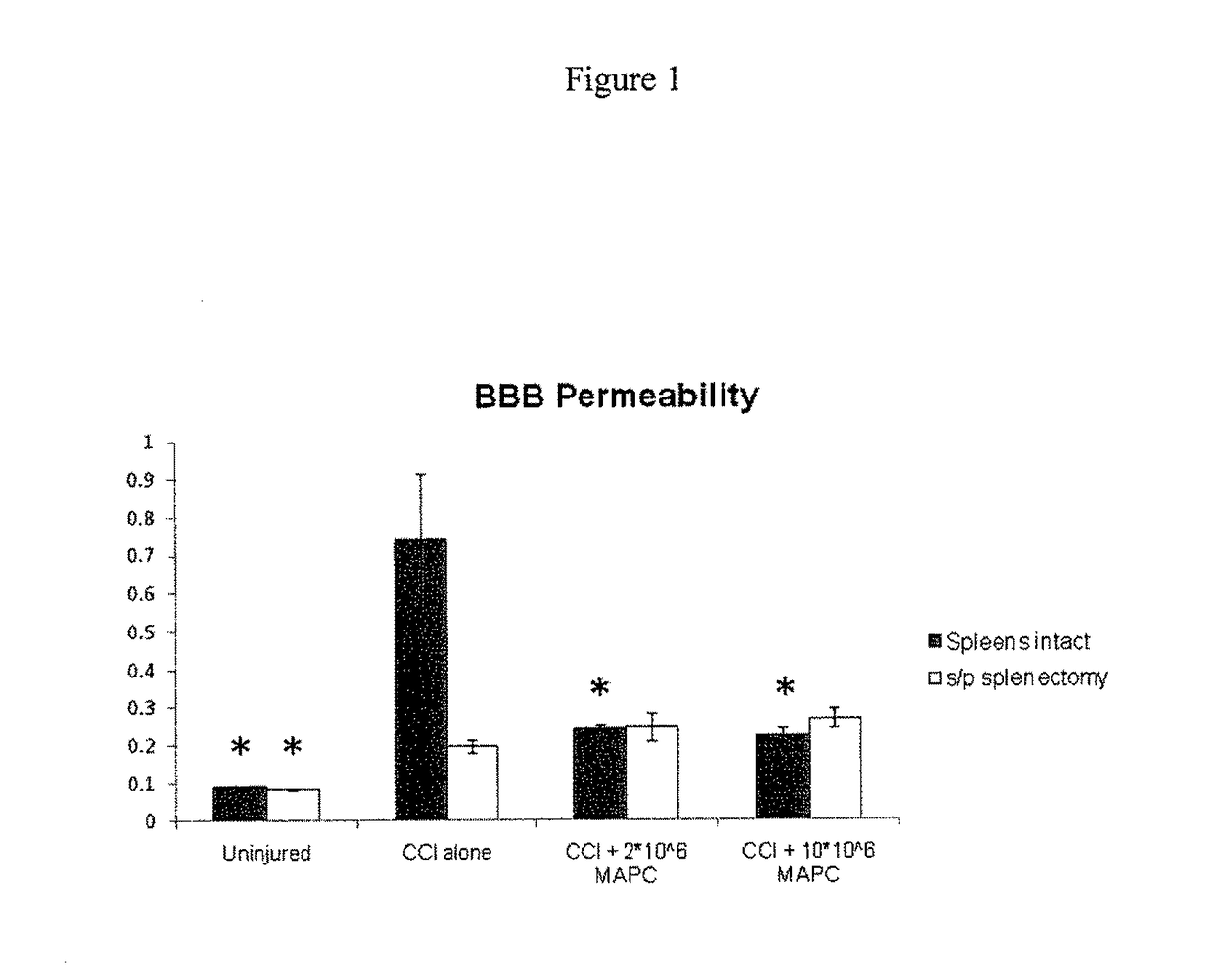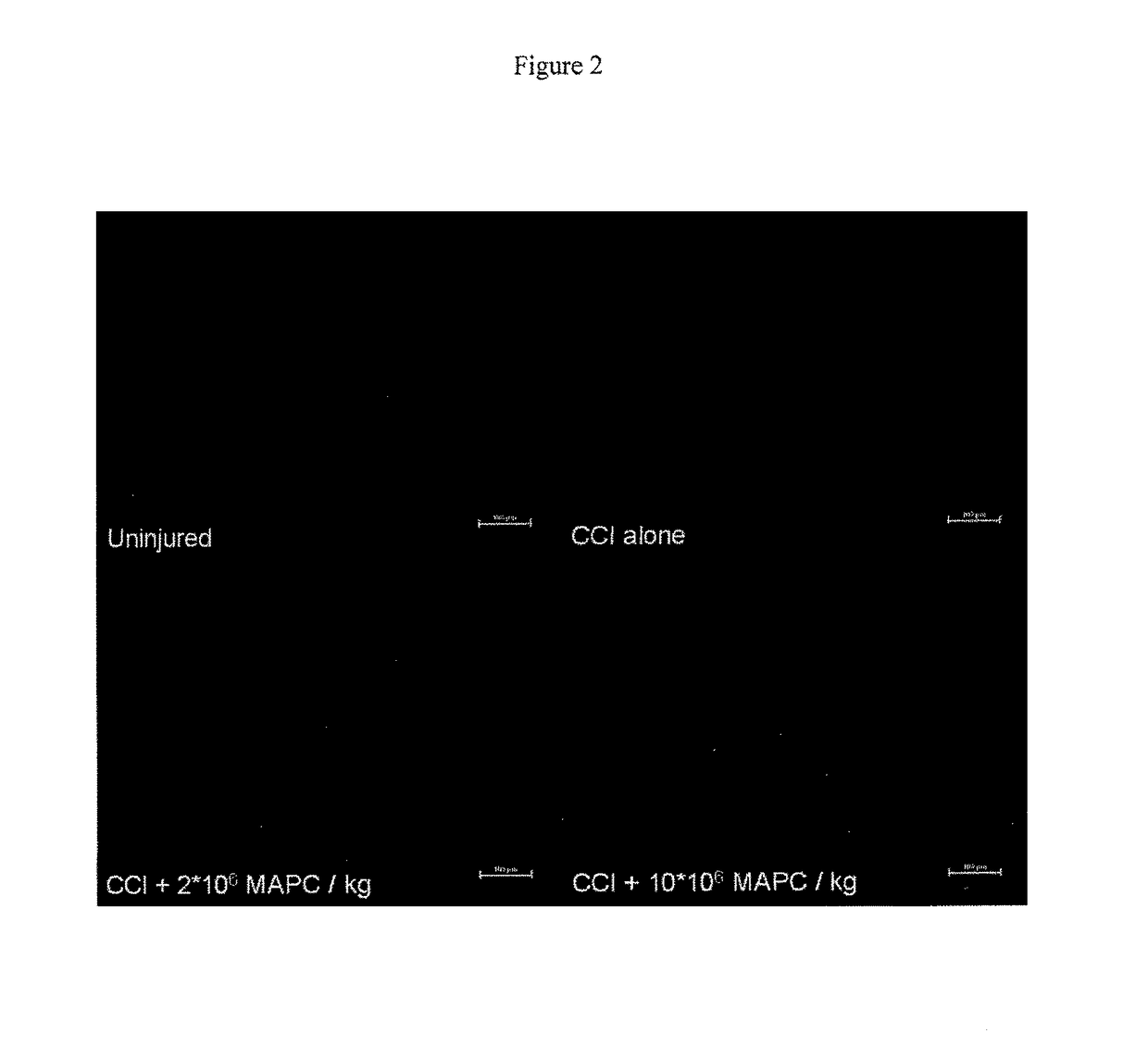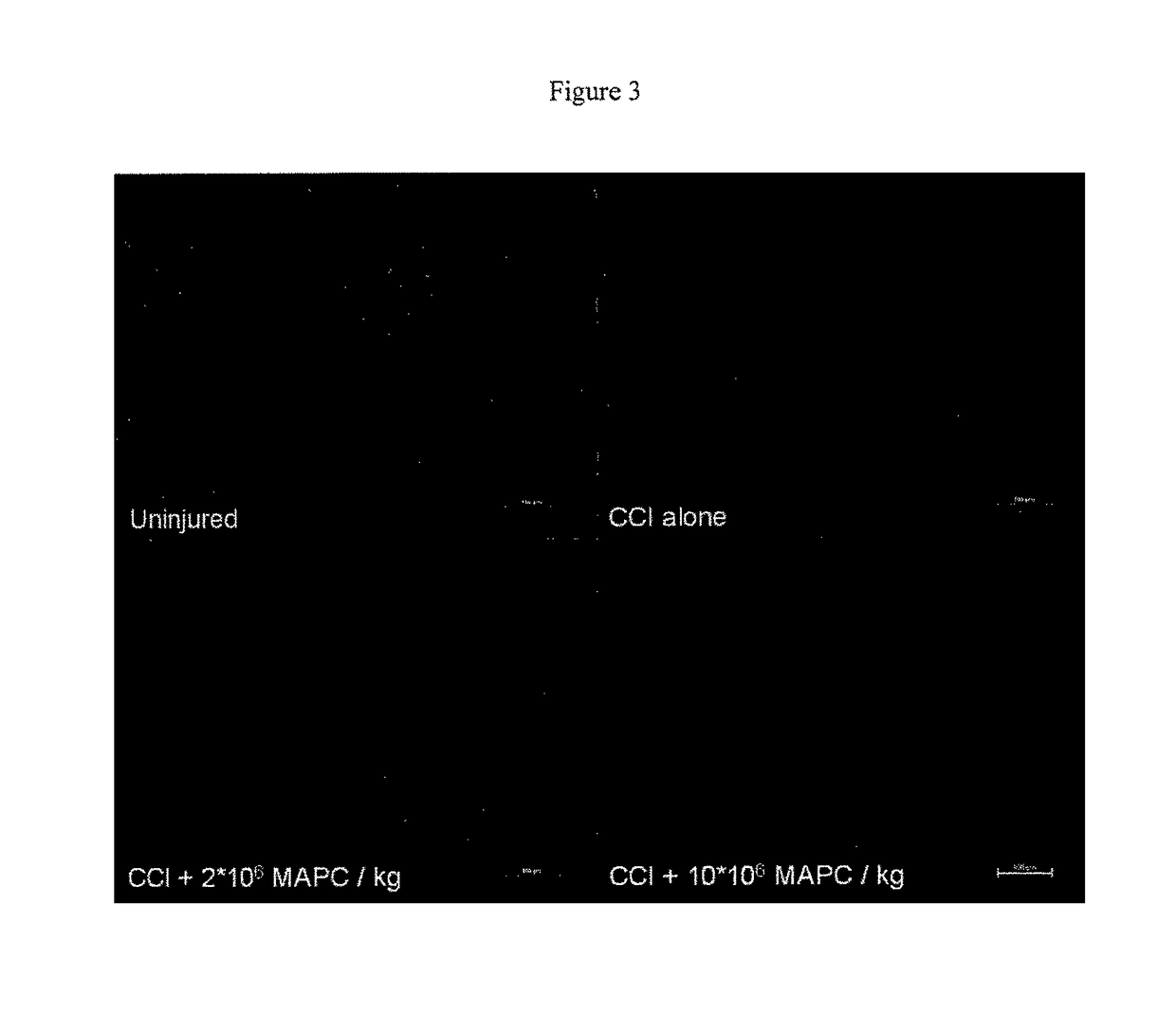Modulation of splenocytes in cell therapy
a cell therapy and spleen technology, applied in the field of spleen cell therapy modulation, can solve the problems of concomitant decrease in spleen mass and complicated recovery, and achieve the effects of preserving immune competence, reducing immunocompetence, and reducing recovery
- Summary
- Abstract
- Description
- Claims
- Application Information
AI Technical Summary
Benefits of technology
Problems solved by technology
Method used
Image
Examples
example 1
Intravenous Cell Therapy for Traumatic Brain Injury Preserves the Blood / Brain Barrier Via an Interaction with Splenocytes in a Rat Traumatic Brain Injury Model
Summary
[0215]Recent investigation has shown an interaction between transplanted progenitor cells and resident splenocytes leading to modulation of the immunologic response (Vendrame et al., Exp Neurol 199:191-201 (2006)). The inventors hypothesized that the intravenous injection of a class of primitive non-embryonic progenitor cells (designated “MAPC”) offers neurovascular protection via an interaction with resident splenocytes leading to blood brain barrier (BBB) preservation.
[0216]Four groups (n=6 / group) of rats underwent controlled cortical impact (CCI) injury (3 groups) or sham injury (1 group). MAPCs were injected via the tail vein at two doses (2×106 MAPC / kg or 10×106 MAPC / kg) 2 and 24 hours after injury. BBB permeability was assessed by measuring Evans blue dye extravasation. Splenic mass was measured followed by spleno...
example 2
Intravenous Cell Therapy for Traumatic Brain Injury Preserves the Blood / Brain Barrier Via an Interaction with Splenocytes in a Mouse Traumatic Brain Injury Model
Splenic Mass
[0272]After CCI injury, normal mice were sacrificed with subsequent measurement of splenic weight. FIG. 8 shows splenic mass measured 72 hours after cortical injury. A significant decrease in mass was observed in the CCI alone control animals when compared to uninjured controls. In addition, the splenic mass was preserved by injection of MAPC. The results are presented in FIG. 8.
Blood / Brain Barrier Permeability
[0273]The BBB permeability measurement was completed using Evan's blue dye in both normal mice and mice after splenectomy. FIG. 9 shows the mean of silibance normalized to tissue weight derived from homogenized cortical tissue derived from the hemisphere ipsilateral to the CCI injury. Normal mice without splenectomy show a significant increase in BBB permeability after injury that is reversed by the intrave...
example 3
[0277]This example shows that human multipotential bone marrow stem cells as described herein exert immunomodulatory effects, prevent splenic contraction, and enhance functional recovery in a rodent model of ischemic stroke. In this particular example, MultiStem® cells were used for conducting the experiment (isolated and cultured under low oxygen, high serum conditions). These experiments were done against the following background considerations: (1) stem cells offer a promising direction to provide a therapy to enhance recovery from a stroke; (2) major mechanism is immunomodulation; and (3) there is an emerging role for the spleen in stroke, namely, that it actively contributes to ongoing injury by releasing inflammatory cytokines and immune cells. The hypotheses for these experiments were that MultiStem® cells would enhance recovery after stroke by immunomodulatory mechanisms involving the spleen.
[0278]This example shows that there are inflammatory cytokine changes when MultiStem...
PUM
| Property | Measurement | Unit |
|---|---|---|
| splenic mass | aaaaa | aaaaa |
| time | aaaaa | aaaaa |
| pharmaceutical composition | aaaaa | aaaaa |
Abstract
Description
Claims
Application Information
 Login to View More
Login to View More - R&D
- Intellectual Property
- Life Sciences
- Materials
- Tech Scout
- Unparalleled Data Quality
- Higher Quality Content
- 60% Fewer Hallucinations
Browse by: Latest US Patents, China's latest patents, Technical Efficacy Thesaurus, Application Domain, Technology Topic, Popular Technical Reports.
© 2025 PatSnap. All rights reserved.Legal|Privacy policy|Modern Slavery Act Transparency Statement|Sitemap|About US| Contact US: help@patsnap.com



